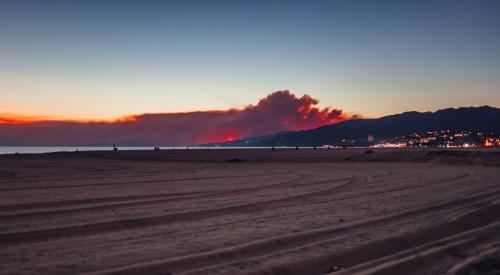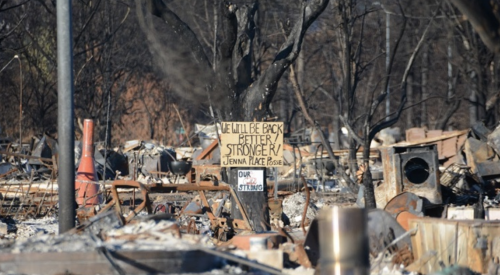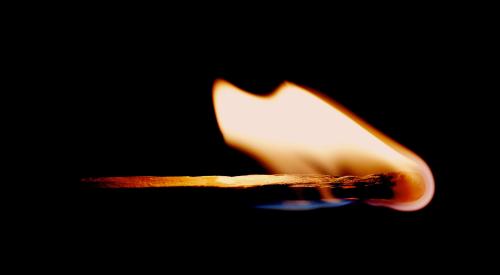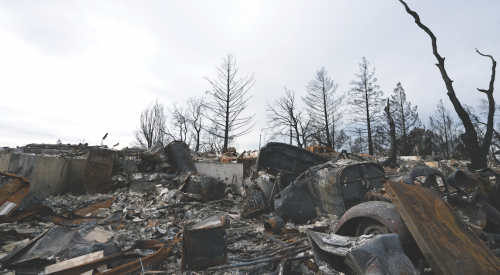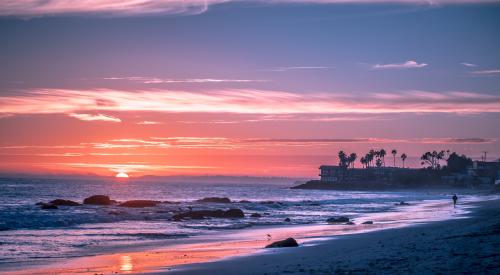|
An aerial photo of Scripps Ranch shows the devastation of the Cedar Fire of 2003. By late winter of 2005, Stonefield Development hopes to have built 81 homes on the empty, scarred lots of the Whispering Ridge neighborhood, located in the lower left-hand corner of the photo.
|
On Oct. 25, 2003, a lost hunter signaling for help started the largest wildfire in California's history. Before it was over, it killed 14 people, destroyed 2,232 homes and damaged another 53. The Cedar fire, ignited in the Cleveland National Forest, burned almost 300,000 acres of land, including the community of Scripps Ranch.
In previous natural disasters, homeowners made individual deals with contractors to rebuild. However, one company, Coto de Caza, Calif.-based Stonefield Development, will build 81 new homes in the Whispering Ridge neighborhood of Scripps Ranch to replace the lost homes, most of which were 18 to 20 years old.
"It was clear to the vast majority of us that Stonefield Development was by far the most quality developer and had very competitive prices," says Christian Anderson, a resident of Scripps Ranch. Three other builders presented new house plans to the fire survivors at Scripps Ranch during December 2003.
The price of the new homes - $93 to $98 per square foot - includes fire-resistant features such as fire sprinklers, boxed eaves, 5/8 inch drywall, dual pane windows and concrete tile roofs. According to Julie Pack, vice president of sales and marketing, Stonefield can offer reasonable rates because they have longstanding relationships with large subcontractors. In addition, the large rebuilding effort in one area allows for great efficiency.
Stonefield is following a six-month construction schedule with two crews working to deliver two homes per day. Stonefield anticipates completing the first home in late December and the rest within eight weeks, says Pack.
Stonefield hired four architectural firms to design seven different floor plans, with four different exterior schemes - traditional, French, English and Italian. Pack says that no two homes will be alike on a street.
"Homeowners can customize their exteriors. This creates what looks like an old, established neighborhood - which is what it was before the fire," says Mike Preece, a partner in Knitter & Associates Inc., one of the participating architectural firms.
Most homeowners are paying for their homes with the money they received from settlements with insurance companies and also have restricted escrow accounts with their respective mortgage lenders. In some cases, homeowners had to take out an additional construction loan.
